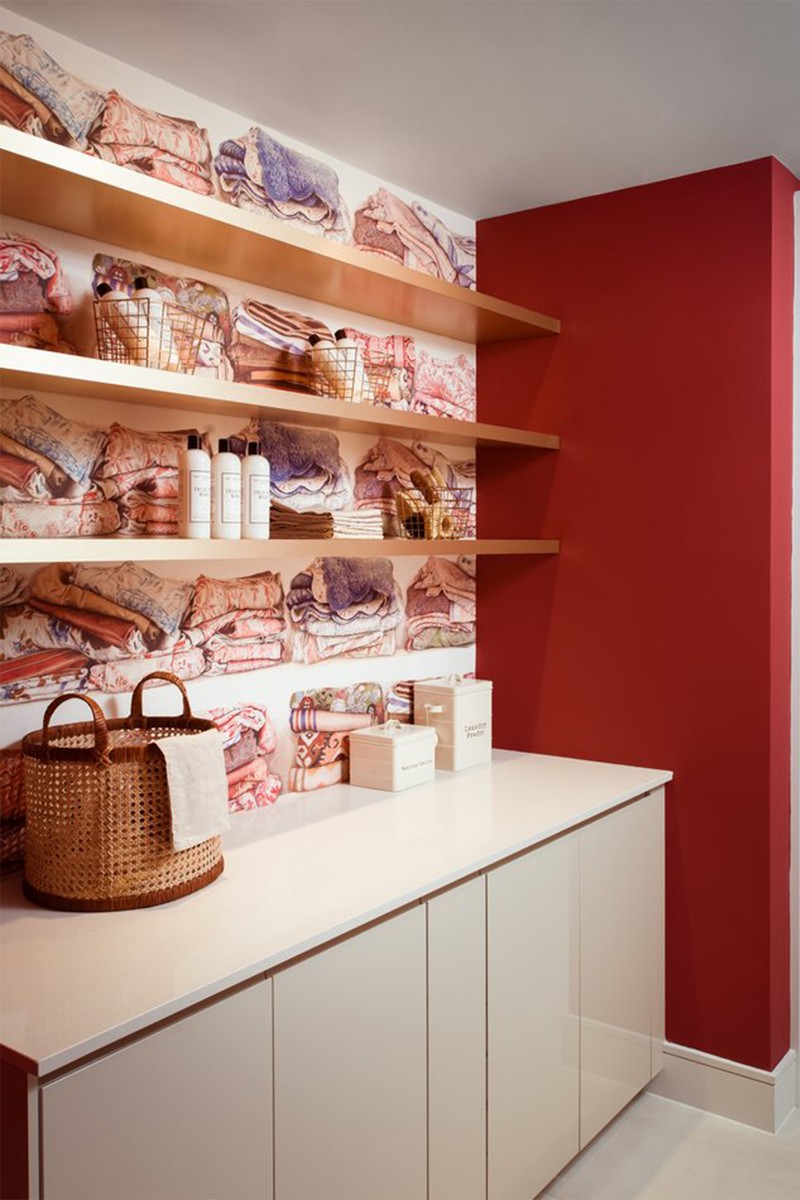How To Plan A Utility Room
Where do you start with planning a utility room?
“First, layout the absolute must-haves: washing machine, dryer, sink, storage etc. Ask yourself what the elements are that you can’t live without and work them into the plan first. If space is tight, stacking a washer and a drier is a clever way to save space – and always use the full wall height for cabinetry or shelves to maximise storage.” – Laura Butler Madden
How do you keep a utility room organised and clutter-free?
“I love cupboards! I try to fit in as many as I can – low cabinetry or full height. You need to have space to hide lots of practical things (drying rack, baskets, ironing boards and so on, plus the usual cleaning products, including a vacuum cleaner). You simply want to hide as much as you can in a laundry room!” – Laura
“The cleaning cupboard has to be compartmentalised in the best way possible. Use clips and hooks to hang brooms, mops and ironing boards on the backs of doors.” – Thea Ingram, Stanza ID
How should I arrange the washer, dryer and other appliances?
“I like to have these raised so you can avoid bending down all the time, and if they are stacked, then this saves space also.” – Thea
“My preference is side by side so you can use the worktop for folding, sorting etc. If there’s not space for this, stack them or buy a combined washer/dryer.” – Laura
What materials are most practical and durable for utility room surfaces?
“We always use melamine doors, solid resin surfaces and tiled floors and splash backs for the most waterproof space.” – Thea
“I love wood and stone. If budget allows, adding a marble worktop and wallpaper (one of my musts in a laundry) gives the space some elegance and character, making it more fun to spend time in.” – Laura
What type of lighting works best?
“Different levels of lighting are really important as you use a utility room at different times of the day. Low-level lighting is good for loading the washing machine at night, when electricity is cheaper!” – Thea
“It’s all about functional lighting. I mostly use inset in the ceiling, and directional if possible.” – Laura
What kind of heating or ventilation do I need?
“You need to have a good heat source in the room – the output from the washing machine and tumble dryer are not enough. A ventilation fan and an opening window are also essential to change the air.” – Thea
“If you have a window, make sure you open it regularly. If not, you must add ventilation.” – Laura
Is installing a sink necessary? If so, which finishes are the best?
“A small sink is really useful. Modern machines are amazing, so gone are the days of needing a huge butler sink to wash in. A small sink allows you to empty away water and wash parts of the washing machine and tumble dryer for maintenance.” – Thea
“I’d go as large as you can with the sink – because when handwashing it’s very easy to make a mess in a small sink. Undermounted steel is good or, if you want to make a design statement, marble or ceramic look lovely.” – Laura
Can a small utility room serve multiple functions beyond laundry – storage or pet care, for example?
“The utility room is always cleaning cupboard, kitchen storage overflow and often pet care. Our favourite project was one where we could incorporate the doggy shower for a family that lived off Clapham Common.” – Thea
“If you have space for good storage, a utility room is a great place to hide away lots of things that you don’t really want on display in the rest of the home, such as pet care. But I don’t think it’s the best place to store coats and wellies. I always find the idea of laundry and boot rooms combined a bit strange – mud with all your clean clothes!” – Laura
Should the design of the utility room blend with the adjacent rooms?
“While I like to keep the colour scheme throughout a house cohesive, cloakrooms and laundry rooms are spaces where it’s good to have a bit of fun, as they are usually smaller and can take a deeper paint colour or some whacky wallpaper!” – Laura
“I think it depends on the position of the utility room in the house. I like the utility to be neutral because, let’s be honest, it’s always full of drying clothes! A neutral background means this can be as uncluttered as possible, but we do normally go for a fun patterned floor to add interest.” – Thea
If you don’t have enough space to accommodate a full utility room, what are your options?
“If you don’t have dedicated space for a laundry room the most logical thing is to find space in a spare bedroom or a bathroom. In the US, the laundry room is almost always upstairs in the house which makes so much sense. It’s where we take off clothes and bed linen, and a spare bedroom is often empty so is the perfect place to dry clothes too – it avoids the sitting room and kitchen being covered in laundry all the time.” – Laura
“Consider installing a washing machine in a large bathroom or the landing – while the basement does work for a utility area, you’ll be travelling further with the laundry. Families with young children can benefit from having utility machines in the overall kitchen space. We like to build these into a separate cupboard. In the past, we have created a utility area with sliding doors facing the kitchen. This is not ideal for sound, but works if you run the machines at night. You can have heating and extraction in this cupboard, and in some projects we have also mounted ceiling drying racks inside the units.
"Our idea is to have the washing machine on a higher floor, if there is space in a bathroom. When we’ve put machines in a smaller bathroom, we have also installed old-fashioned airing cupboards with the heat source and slatted shelves. If you aren’t able to install a vented dryer, you can buy a condenser dryer; the hot air is moved to a condensing chamber where it is condensed into water, then collected and stored in a container under the machine. This works well in bathrooms where you can easily empty them out into the sink.” – Thea
For more from the designers, visit Stanza-ID.com & LauraButlerMadden.com
DISCLAIMER: We endeavour to always credit the correct original source of every image we use. If you think a credit may be incorrect, please contact us at info@sheerluxe.com.
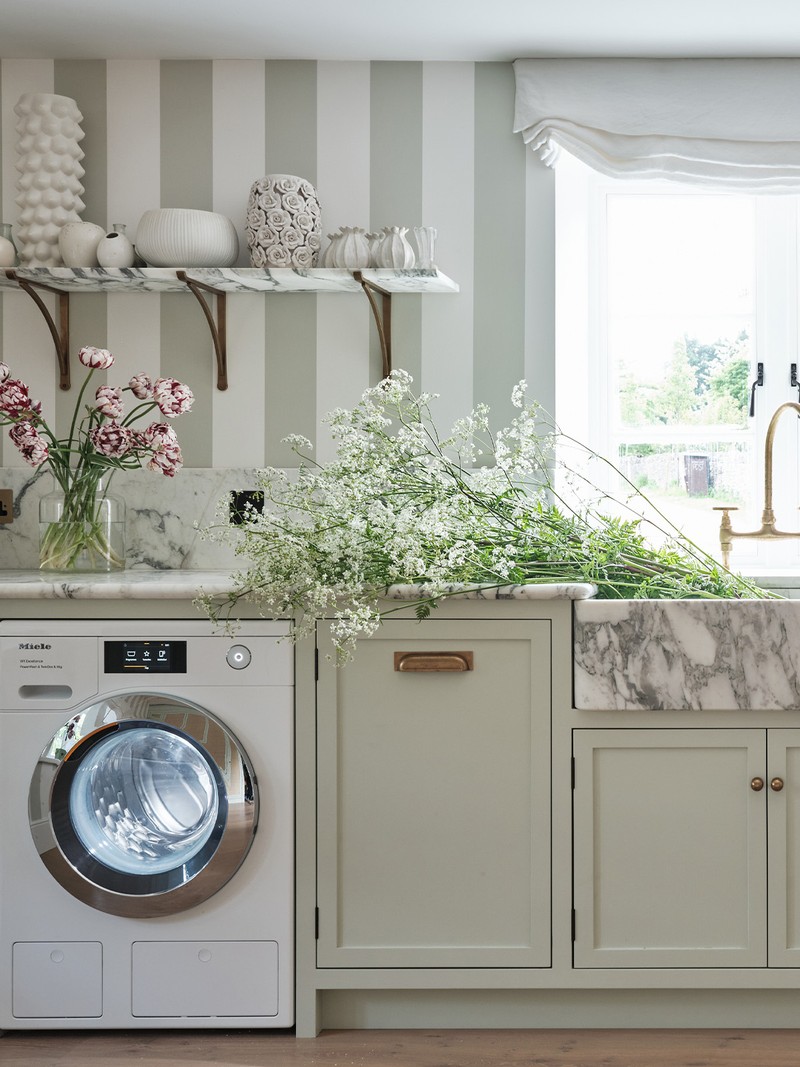
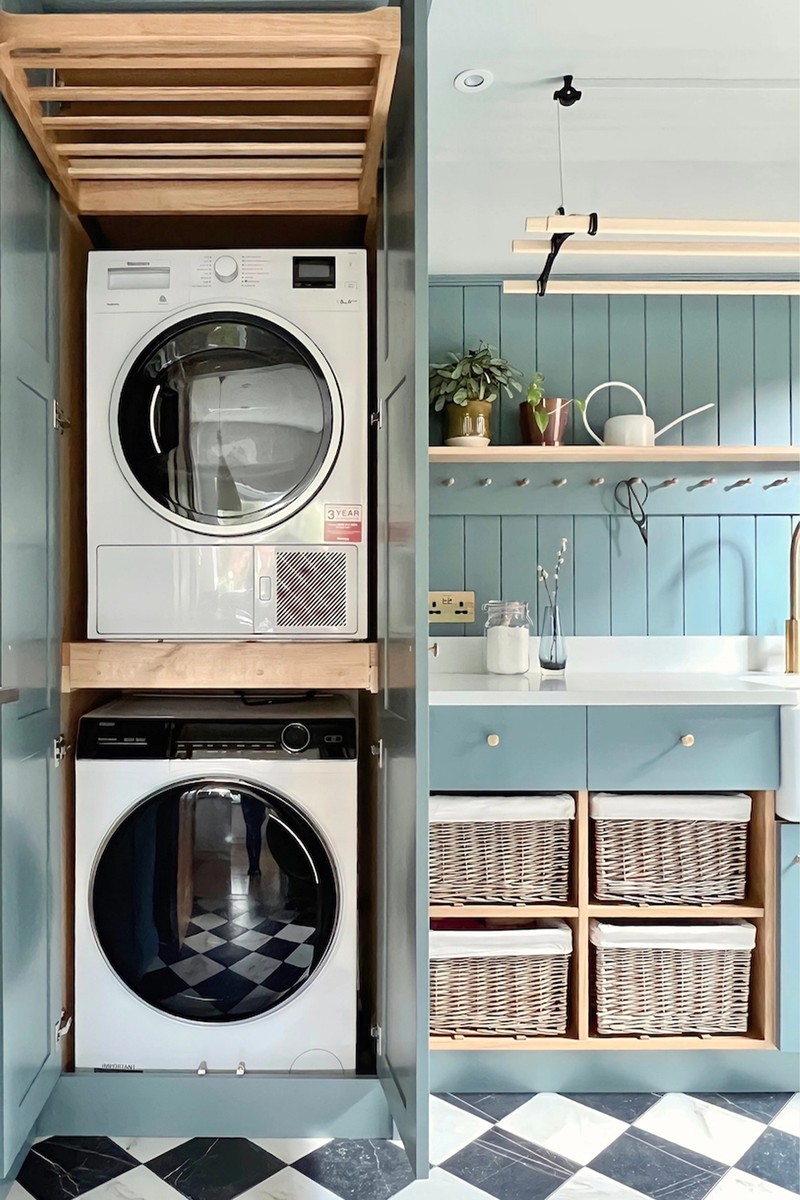
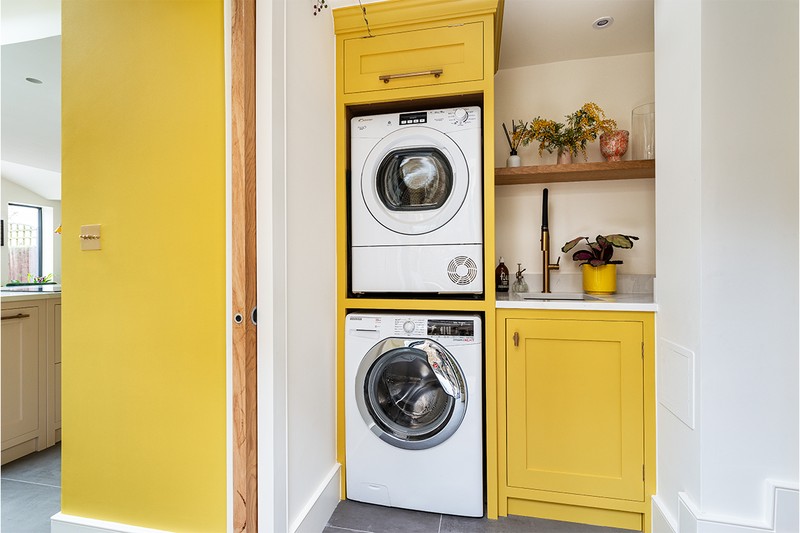
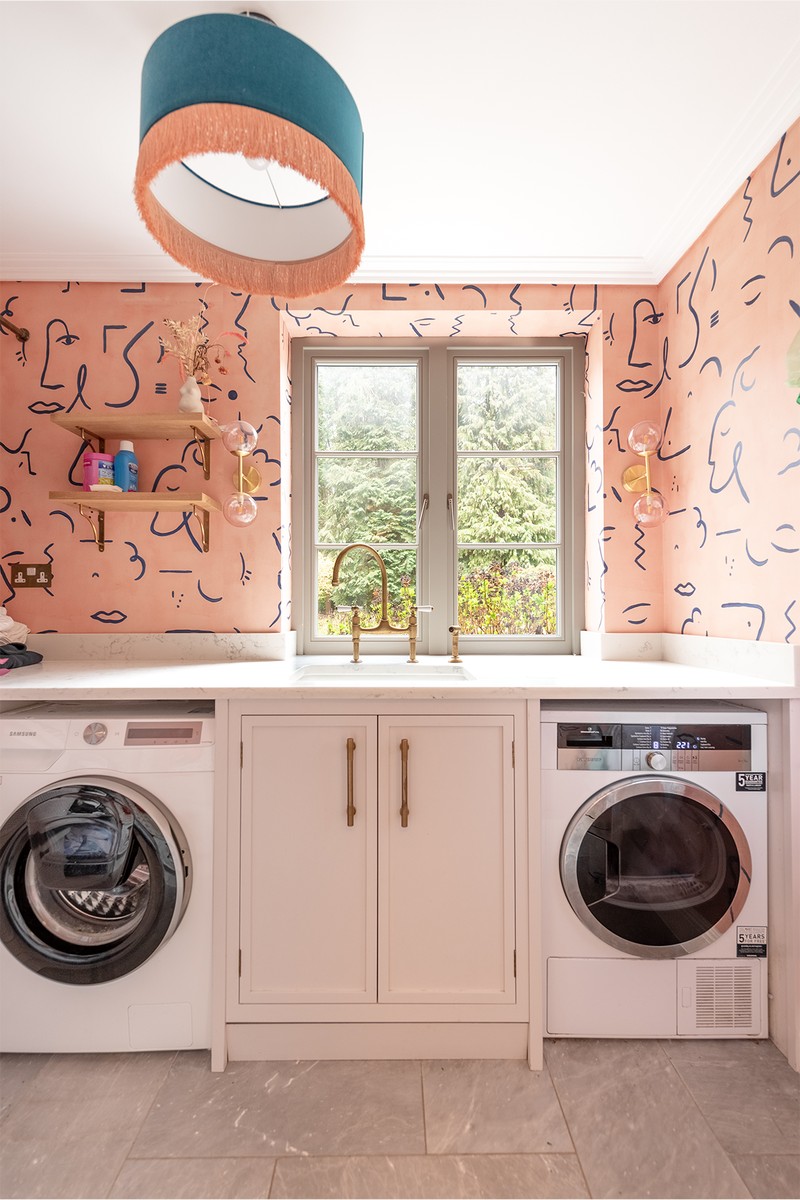

/https%3A%2F%2Fsheerluxe.com%2Fsites%2Fsheerluxe%2Ffiles%2Farticles%2F2024%2F01%2Fsl-utility-rooms-laura-butler-madden-full-bleed.png?itok=VzcJdzld)
